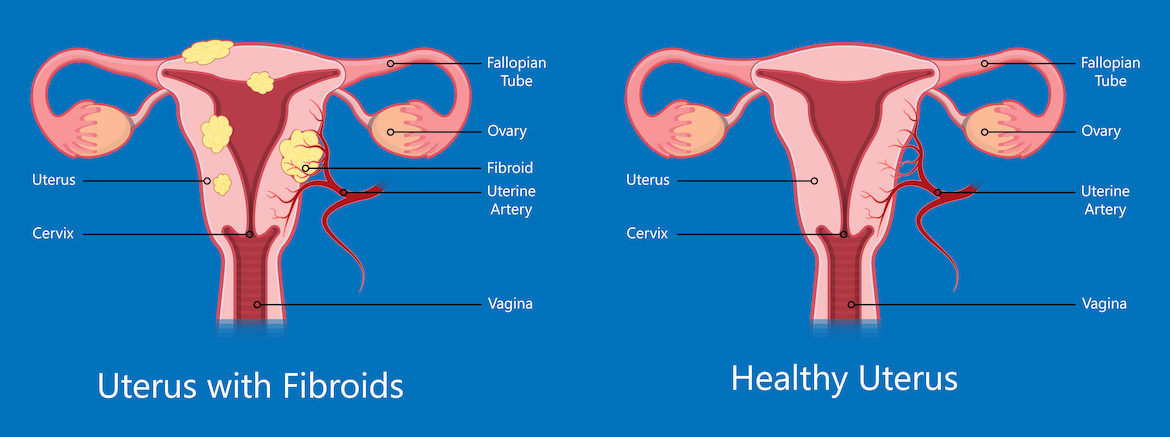Menstrual cramps are bad enough as is. Throw in the presence of uterine fibroids, and you may find that your daily life is becoming cumbersome — not just during your time of the month.
But it’s important to know that you’re not alone. In fact, according to the Center for Uterine Fibroids, “Research indicates that between 20% and 50% of women have fibroid-related symptoms.”
And if you are or believe that you may be living with uterine fibroids, cramps won’t be the only physical sensation you experience.
Here’s what else you need to know about the common signs and symptoms of uterine fibroids …
#1 — Pelvic Pain and Pressure
The most common symptom or indication that a woman has uterine fibroids is pain and/or pressure in the pelvic region, regardless of where she is in her menstrual cycle. This is often the result of one of two types of fibroid:
The first fibroid liable to produce internal pain is pedunculated fibroids, which grow on a stalk around the uterus. The larger the fibroid grows, the more likely it is that the stalk itself will begin to twist, leading to this widely-known symptom of pain or cramping.
Otherwise, subserosal fibroids – or fibroids that grow directly on the outside of the uterus — are also known for creating discomfort. This is because subserosal fibroids place pressure on surrounding organs as they grow, leading to an uncomfortable combination of both pain and pressure.
#2 — Heavier Menstrual Bleeding
The longer a woman is living with fibroids, the heavier and/or more painful her menstruation cycle typically becomes.
Intramural fibroids, specifically, are often the cause of this, as they are the most commonly occurring variation of fibroids and grow within the muscle of the uterine wall. As they grow, an intramural fibroid essentially stretches a woman’s uterine lining, causing heavier bleeding cycles or even causing irregular menstruation outside of a woman’s usual cycle.
That being said, submucosal fibroids — which develop in the inner lining of the uterus, or sometimes on a stalk — have also been known to cause irregular bleeding or light spotting.
#3 — Frequent Trips to the Restroom
Women who are frequently excusing themselves in an effort to begrudgingly and repeatedly visit the restroom might find that they don’t always have to urinate — they’re simply suffering from the repeated symptom of feeling as though they do.
This is because the uterus is placed directly next to the bladder in the body. Thus, if it grows large enough and is placed close enough, any type of fibroid may lead to more frequent urination.
As previously mentioned, subserosal fibroids are the most likely to place pressure on surrounding organs, making them a likely culprit for this specific symptom.
The good news? You don’t have to live with these symptoms.
Relief is close at hand when you contact Duval Vascular & Fibroid Center to learn more about uterine fibroid embolization, or UFE! Don’t let fibroids cramp your style. Instead, find long lasting relief in the hands of your locally-trusted professionals. Call us today at 904-423-6017 to learn more!


